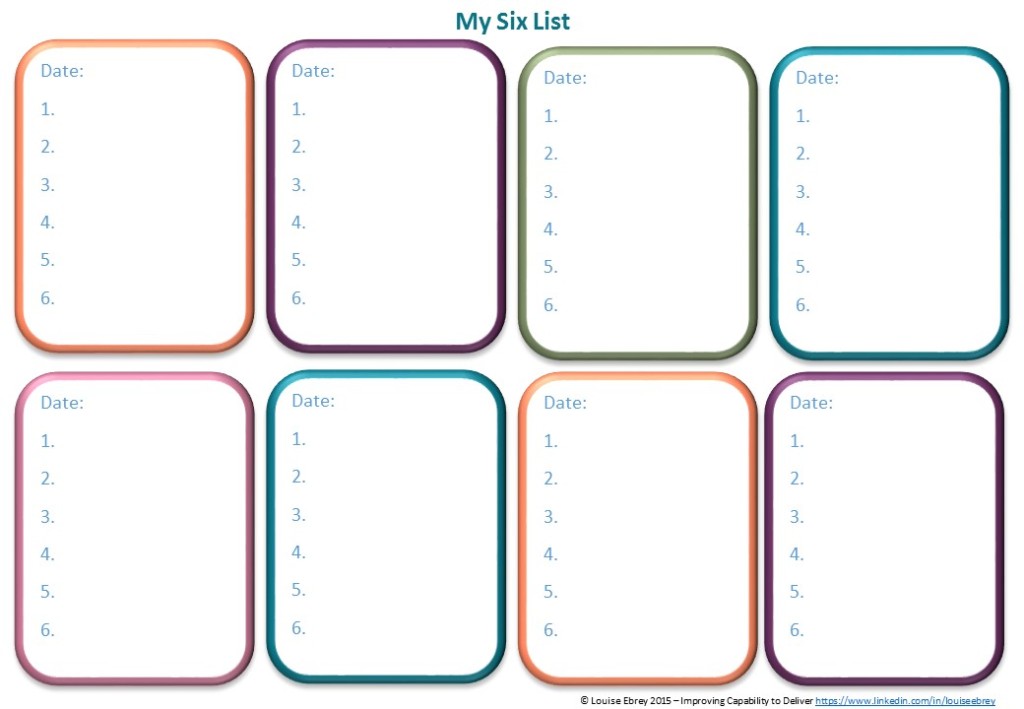
What separates productive people from business owners that are constantly stressed? This post is part of weekly feature, Workflow Wednesdays, that aims to find out, with a weekly post going in-depth on a specific part of a business owner’s workflow and what they do that makes it rock. Interested in being featured in a post? Sign up here!
In today’s Workflow Wednesday post, we’re going to be learning more about how to
Take it away, Louise!
Introduction
I work with projects and teams to help them deliver better and achieve their purpose. I’ve done this both as an in-house person and an external person. What I’ve realized recently is that the business model isn’t the important part for me. It doesn’t matter how I am employed, as long as I can get in with the teams and help them to do what they do better.
I’m also the co-founder of Great Insiders – which is a place for Internal Experts Specialists and Advisors who would like to be more effective, visible and appreciated.
One of the things that makes me really good at what I do is that I’m an explorer and a really good filterer of information. So I can find the stuff that’s useful for people and give it to them at just the right time, with the right context. I combine this with my people skills and my process improvement and change management skills to give people the space to do some really special work.
So Louise! What part of your workflow do you have totally down?
Because I have lots of interests, I have a tendency to try to be superwoman – sometimes it’s a good idea to not take on everything. So to combat that, the one thing I make sure I do is getting a list of what I actually plan to do that day. Not what I should do. Not what I could do. What I WILL do.
What was the catalyst in getting this part of your workflow nailed down?
There’s a couple of things that got me to this point. I teach Lean and effective ways of working. One of the Lean tools that’s used a lot in construction is all about improving reliability – so, doing what you say you’re going to do. Getting my own daily planning right clicked and became very simple when I read an article about a chap called Ivy Lee a year or so ago.
There are various versions of this story, but each has the same core tale to it. In the early twentieth century, a management consultant called Ivy Lee was working for Charles Schwab, the CEO of Bethlehem Steel. Charles Schawb supposedly said something along the lines of, “We already know what we should be doing. If you can just show us a way to get it done better, I’ll pay you anything you want.”
Ivy Lee responded along the lines of, “Get a piece of paper and on it write down the 6 things you have to do tomorrow. Then, prioritize that list and put it in your pocket.”
He continued with, “Tomorrow, first thing, take out the list. Check that the prioritization is still correct. Work on item one until it’s done or you’re done with it. Distractions will arise. Ignore them. Work on number one until it is done. Then move on to number two. Then, when that’s also finished, number three, and so on.”
“At the end of every day, make a new list. Don’t worry about the things that don’t get done. You will know you’ve been doing the most good possible for your company, and if you can’t get all items done using this method, you couldn’t get them done using any other system, either. Once you’ve had time to prove to yourself the value of this, have your people try it out as well. In fact, try it out as long as you like. Then, you can send me a check for whatever you think it is worth.”
Some months later Schwab, having shared the ideas with his team, sent Lee a cheque for $25,000 USD, saying that it was the best time usage tool he’d ever learned.? (That’s about US$300,000 in today’s money.)
What’s your process?

What tools are essential for this part of your workflow?
Sometimes, I use a pad of post it notes. They’re ideal for fitting my 6 things on. Other times, I like to use a sheet of paper folded into 8, with a list on each section. That way, I can see a whole week at a glance. The advantage of doing it this way is that I can see what’s moving from list to list every day and not getting done. Here’s an example:
(click for full size version)
Anything else you want to add?
There’s one other thing I do – not all the time, maybe one week a month or when I feel things aren’t going right for me.
Every time I don’t do something, I scribble down the reason why. I try to get to the real reason, not just the excuses that come to mind. I then put these into categories:
- Resource related – basically people time
- Materials – did I have the stuff I needed to turn into something else?
- Tools and Equipment – did the printer break down, or my pen run out? (I’m exaggerating, but you get what I mean)
- Lack of information – did someone not come through with info they promised? Did I realize I needed something part way though the task?
- Underestimating task time – maybe I didn’t realize how long it would take
- Overestimating my capacity – slightly different to the above; this would be when I just took on too much
- Change in priorities – something came up that was more important
By looking at what we don’t achieve through these filters, we can start to work out what we need to do differently to get more done.
***
Michelle again here. That was great! Thank you so much, Louise, for sharing not just the tool, but also the printable. If you want to snag that six list printable above, you can do that here, and you can also download a worksheet that goes a little more in depth on the technique right here. And if you’re an internal consultant, specialist, or advisor who wants to feel more visible, effective, and appreciated, head over to Great Insiders to join the LinkedIn group.
Last but not least, if you’re interested in being featured in your very own Workflow Wednesday post, sign up here.

